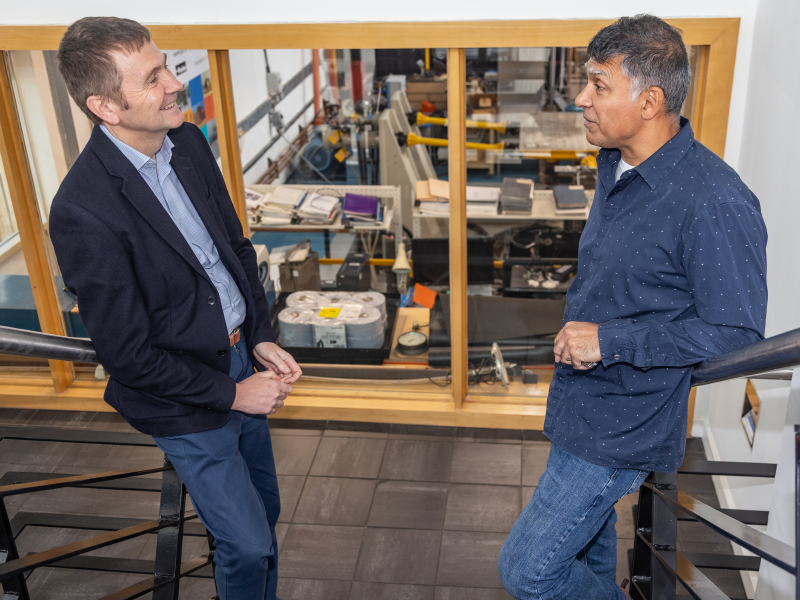Thrings Managing Partner Simon Holdsworth meets Professor Richie Gill from the Centre for Therapeutic Innovation, University of Bath
Simon Holdsworth: Tell us a little about yourself and the work you do.
Richie Gill: I am a Professor of Healthcare Engineering within the Department of Mechanical Engineering at the University of Bath, specialising in orthopaedics and particularly with hips and knees. I’ve been in Bath since 2012 and spent 20 years prior to that at Oxford University.
I am also the Co-Vice Chair of the Centre for Therapeutic Innovation, based at the University, which aims to bring academics, clinicians and industry together to deliver personalised and innovative treatments for patients. The University has three key research themes of health and wellbeing, sustainability and digital and there are teams across the centre and the wider University doing some incredible things in these spaces.
SH: What have you been working on lately?
RG: We have devised a new way to treat knee osteoarthritis, a condition which causes a great deal of knee pain. It affects as much as a quarter of the population in Western countries and is increasingly impacted by age.
Knee replacements are commonplace as a treatment for the condition but there is no way back. Parts of the knee are replaced with metal and plastic that after a few decades are likely to need replacing again. The best knee is the one you are born with and if the original knee can be retained that is the best option.
Pre-Covid, around 120,000 knee replacements were done each year in the UK and it is only going to increase. With longer waiting lists, knee conditions for those in the queue will continue to deteriorate and the numbers we will face will be near impossible to overcome.
We have been working on a personalised treatment called TOKA (Tailored Osteotomy for Knee Alignment) that, if taken on by the NHS, would be much more efficient and cost-effective for surgeons and massively improve outcomes for the patients. Crucially TOKA can be done at a much earlier stage of knee osteoarthritis, realigning the knee and relieving symptoms including the acute pain many patients suffer from.
We 3D print a surgical guide and plate to create a perfect fit for the patient. The guide allows the surgeon to make precise cuts and it is then removed for the corrective plate to be attached.
SH: What kind of impact could this have on treatments for knee problems in the future?
RG: Above all else, this procedure enables people to retain their own knee for longer and potentially completely avoid any need for a full replacement. This will massively improve their quality of life and allow them to stay active. It is also quicker and easier for the surgeon compared to the current procedure.
We have been carrying out trials over the past two years in Italy and the initial publication has been extremely promising with reports of people being pain-free within the first three months – so we know it works! We’re now looking for investment to take the next steps and bring it to the NHS.
SH: What in your view makes the Centre for Therapeutic Innovation so special?
RG: Since it was set up four years ago, the centre has established a strong translational element for fundamental research, being able to take it and put it into practice to address unmet medical need.
It also has established some outstanding international working relations with other leading universities across the world, including Spain, France and the United States. This really helps in gaining access to cutting edge resources and equipment as well as to fantastic minds who we can collaborate with.
And how does this translate to the University as a whole?
I continue to be blown away by the opportunity and encouragement for collaboration across the various departments across the University. The CTI is like an umbrella bringing together expertise from all fields of research and preventing work being compartmentalised. Nature and diseases don’t care about the boundaries we set up in academic fields and so if we want to solve these problems, we need to be working together.
Collaboration doesn’t stop at the University’s borders, there are fantastic links with organisations across Bath. This city is our home and it is important we are an active member of the community and are continually strengthening our relationships with other keystone institutions. One of the centres for our UK clinical trial, for example, is at the RUH in Bath.
To find out more about the Centre for Therapeutic Innovation, visit ctibath.ac.uk.
